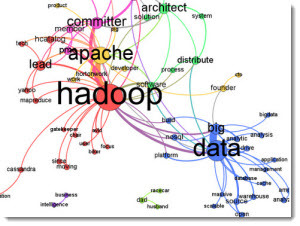Your existing CRM data is a treasure trove. But, you are likely not using it properly. Certainly not in today’s new ways of extracting and positioning that data for online use in your marketing. You are missing a huge opportunity. You can use that data (that you already own) to drive more targeted business using your existing customer data. Learn more about your own data, use it wisely in your marketing, and you can begin to predict the future for potential traffic, sales and bottom line profits.
Gone are the days when print marketing was used to reach existing and potential customers. Today’s marketing professionals understand how using CRM data to synchronize sales and marketing efforts, across various digital mediums, is an imperative part of an effective business plan.
A positive, return-of-investment ad campaign is only deemed so when the click-though and purchase rates are satisfactory enough to justify the time, effort and financial costs associated with them.
This is where the union between measurement, targeting and personalization all come into play.
Measurement
Setting pre-defined goals for each campaign allows marketers to determine whether a campaign was a success.
Whether it is through the use of A/B testing, a percentage of views/clicks/submissions or through the use of some other metrics, the goal is to target an audience and have them end up, not as a customer in the monthly/quarterly/yearly sales cycle, but as a life-long business relationship.
Regardless of which type of advertising medium, or combination thereof, a business will choose; the goal of all effective advertising campaigns is to reach a customer, despite where they are (online, off-line, mobile). An effective marketer can only measure customers he or she has reached.
What about the others that slipped away?
Targeting
Look-alike modeling, also known as a Lookalike Audience, is currently a marketing practice used by social media giant Facebook. A Lookalike Audience is a group of prospects targeted based on the customer personas a particular business wishes to reach.
In addition to gaining new followers for your business and boosting your brand’s social media presence, these prospective custom audiences are also an asset when vying for additional landing page sell-through revenues. Other online big data service marketing providers like Liveramp – provides lookalike audiences for CRM.
Targeted groups can be reached during various points of the customer lifecycle stage and look-alike modeling can be used, not only as an inexpensive way to gain new prospects but to test the effectiveness of new calls-to-action.
With metrics factored in, a business can have measurable results based on existing customer bases while capturing new, Lookalike Audiences and evaluating their response rates.
Personalization
To ensure both active and potential customers receive personalized service, multi-channel marketing can be implemented throughout the use of social media outlets. Interactive digital campaigns should be used to deliver online ads to an intended group of consumers previously served by email or direct mail.
![]() When these personalized marketing campaigns are cohesively aligned with CRM programs, actionable results can include:
When these personalized marketing campaigns are cohesively aligned with CRM programs, actionable results can include:
- Cost savings from having to pay for direct mail-related expenses and the avoidance of mail not reaching the intended recipient.
- Reduction of emails being sent to spam folders; thus never being read.
- Client reporting becomes easier as each specific campaign’s overall performance metrics are actionably measured, reported and archived for future use.
- Ability to increase a business’ social media presence through the use of instant social media postings, landing page redirects, video marketing and other new-media.
Can Traditional and Digital Media Be Used Together In the CRM Experience?
The answer is certainly yes; if it will help increase your business’ overall bottom line and provide superior customer service. Again, this is where understanding your targeted customer demographic and personas come into play.
When implementing the true form of multi-channel marketing, customer interaction and acquisition are the goals. This means customer engagement and response could come from a direct mail catalog, visiting a business’ retail location, reading updates on a social media site, or instantly connecting with a mobile application.
Since an audience will need to be receptive to campaigns, A/B testing was mentioned earlier, but don’t forget about frequent digital content updates and making them relevant. Remember, the first 160 characters in any message are the most important, especially those delivered on mobile devices.
Attention-grabbing headlines, promotions and calls-to-action are a priority, and when executed effectively, can help increase a business’ CRM database, overall service reputation, attainable digital audience, and prospective yearly revenue.
To learn more about utilizing your existing customer data, and how you can leverage it for driving traffic and real customer engagements – get more information here.





